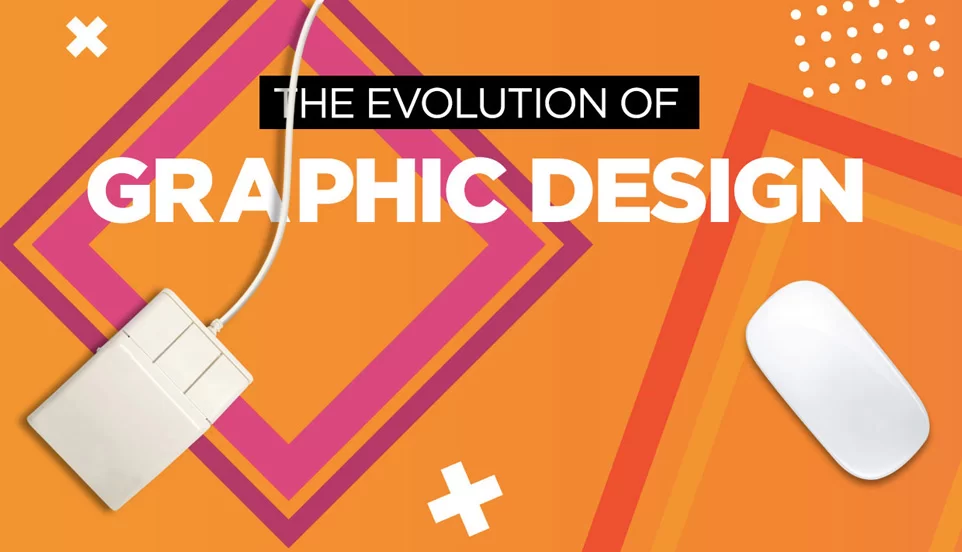Explore the dynamic landscape of graphic design in the digital age, from its humble beginnings to cutting-edge innovations, with insights from Techtenstein.
In this section, introduce the evolution of graphic design, tracing its roots from traditional methods to its digital transformation in the modern era. Highlight the significance of graphicdesign in shaping visual communication and brand identity.

1. The Origins of Graphic Design
- Historical Overview
- Provide a brief history of graphic design, starting from ancient civilizations such as Mesopotamia and Egypt, where rudimentary forms of visual communication emerged.
- Print Revolution
- Discuss the pivotal role of the printing press in the 15th century, which democratized access to printed materials and fueled the growth of Visual Communication as a profession.
2. The Digital Revolution
- Introduction to Digital Design
- Explore the advent of digital technology and its transformative impact on graphic design practices, ushering in a new era of creativity and innovation.
- Desktop Publishing
- Discuss the emergence of desktop publishing software in the 1980s, empowering designers to create and manipulate digital layouts with unprecedented ease.
3. Trends in Modern Graphic Design
- Minimalism
- Explore the rise of minimalist design principles characterized by simplicity, clean lines, and ample whitespace, reflecting a shift towards clarity and functionality.
- Flat Design
- Discuss the popularity of flat design aesthetics, characterized by two-dimensional elements, vibrant colors, and minimalist typography, influenced by digital interfaces and mobile design trends.
4. Incorporating Technology in Design
- Responsive Design
- Explore the importance of responsive design in adapting graphic elements to various screen sizes and devices, ensuring optimal user experience across platforms.
- Motion Graphics
- Discuss the integration of animation and motion graphics in graphic design, adding dynamic elements and interactivity to digital experiences.
5. Sustainability and Ethical Design Practices
- Environmental Considerations
- Highlight the growing emphasis on sustainable design practices, including eco-friendly materials, recycling, and reducing carbon footprints in graphic design production.
- Ethical Design
- Discuss the importance of ethical considerations in graphic design, such as inclusivity, diversity, and representation, promoting social responsibility and cultural sensitivity.
6. Innovative Technologies Shaping the Future
- Augmented Reality (AR)
- Explore the potential of AR technology in graphic design, allowing for immersive and interactive experiences that blur the lines between physical and digital worlds.
- Artificial Intelligence (AI)
- Discuss the role of AI-powered tools and algorithms in streamlining design processes, generating personalized content, and enhancing creativity in graphic design.
7. The Intersection of Graphic Design and User Experience (UX)
- UX Design Principles
- Explore the synergy between graphic design and UX principles, emphasizing the importance of user-centered design approaches in creating intuitive and engaging digital experiences.
- Accessibility
- Discuss the significance of designing inclusive experiences that prioritize accessibility for users with diverse needs and abilities.
8.Collaboration and Remote Work in Design
- Remote Collaboration Tools
- Highlight the importance of remote collaboration tools and cloud-based design platforms in facilitating seamless communication, file sharing, and project management among distributed design teams.
- Virtual Design Workspaces
- Discuss the emergence of virtual design workspaces and digital whiteboarding solutions, enabling real-time collaboration, brainstorming, and ideation sessions among remote design professionals.
9.Personalization and Customization in Design
- Data-Driven Design
- Discuss the use of data analytics and user insights to inform design decisions, enabling personalized and tailored experiences that resonate with target audiences on a deeper level.
- Variable Fonts and Dynamic Content
- Explore the potential of variable fonts and dynamic content to create customizable design solutions that adapt to user preferences, device capabilities, and contextual factors.
Conclude the article by highlighting the dynamic nature of graphic design and its ongoing evolution in response to technological advancements and changing societal trends. Encourage readers to embrace innovation and creativity in their graphic design endeavors, staying abreast of emerging trends and technologies to remain competitive in the digital age



